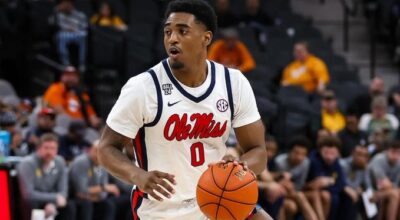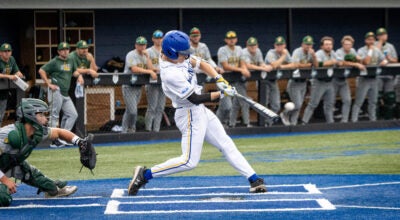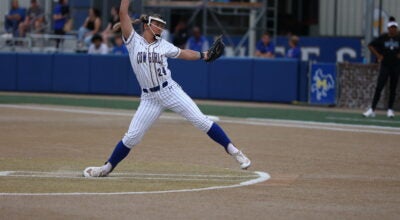Dual threat in pocket is must-have
Published 9:26 am Friday, November 28, 2014
When one looks at the factors behind McNeese State’s 6-5 season, the discussion starts with injuries. But it does not end there.
It’s true that McNeese played most of the season without a full deck of players. Yet in every game the Cowboys lost, the ultimate difference was quarterback play. The inability to produce much out of its passing game, combined with its trouble stopping the top signal callers from opposing teams, resulted in McNeese missing the Football Championship Subdivision playoffs for the fourth time in five seasons.
Arms race
McNeese was eighth in the Southland Conference in passing yards, passing efficiency and passing touchdowns.
Tyler Bolfing is a great kid and a truly tough guy. Teammates call him T-Bo, not just because it is the simplest conjunction of his first and last names, but because he carries himself in that respectful, Bible-quoting Tim Tebow manner.
Unfortunately, there is also some resemblance between the two when it comes to throwing a football in a forward direction. And that makes it hard to picture Bolfing starting behind center next fall if this team is going to improve.
He was capable in spurts as Cody Stroud’s backup his first two seasons, but it was a different story against teams that had more than enough game footage to prepare for him.
McNeese faced two conference opponents when one could objectively or statistically call Bolfing a better quarterback than the guy on the other sideline — Nicholls State and Incarnate Word. If you’re in the same sentence as those two programs, it’s time for a new paragraph.
Bolfing did have a higher passing efficiency than Sam Houston State’s Jared Johnson in addition to the hodgepodge of signal callers at UIW and Nicholls, but Johnson had 753 rushing yards in comparison to Bolfing’s minus-32.
The Cowboys have a quarterback who can run, obviously, as Daniel Sams added that element this year. He was McNeese’s leading rusher, averaging 71.1 yards per game before a thumb injury put him on the shelf. If one does not include Sams’ carry in the Southeastern Louisiana game, which they shouldn’t, that average raises to 79 yards per game.
The trouble is Sams’ accuracy, or lack thereof, necessitated a two-quarterback system. He completed 47.4 percent of his attempts, a figure that is slightly better than that of Incarnate Word’s Jordan Scelfo.
Importance of spring
This spring will be the make-or-break trial to determine whether Sams is capable of taking over the position full-time. That will require successful recovery from his recent thumb surgery in addition to seeing how well he runs an offense more tailored to his skills.
“That was more different than anything I’ve ever been around. We had a quarterback who really couldn’t do anything until August camp because of his thumb,” said Cowboys head coach Matt Viator. “He couldn’t throw all summer. So it was a work in progress to see where he could fit in and what he could do. We were still doing that four or five games into the year. It’ll certainly help if we can have him healthy enough for spring ball. Spring ball is where you experiment, not the fall.”
If Sams continues to struggle in the passing game in spring practice, it would be wise to utilize him in a Kordell Stewart-style “Slash” role next year. He has the athleticism to be a weapon from any spot on the field, and it’s also more in line with any professional aspirations he would hope to fulfill. Sams’ elusiveness makes it fun to imagine him as a punt returner, though clearly no coach would risk placing his quarterback in such a position. (Exception to the rule: Indiana coach Cam Cameron used senior quarterback Antwaan Randle El as a punt returner in 2001, which helped Randle El’s draft stock).
Will Briscoe’s second-half performance against Lamar represented the best any McNeese quarterback looked throwing the ball against a non-cupcake.
Briscoe was 9 of 16 for 89 yards and two touchdowns after halftime in very gusty conditions. Three of those incompletions were flat-out drops. One got the impression he was capable of leading the Cowboys to a comeback win if the Cardinals hadn’t run off the final four minutes of the clock before their last-second field goal.
Of course, with Briscoe health is always a concern. It took him five years just to get on the field after so many setbacks with both of his knees. He also had the benefit of Lamar getting one quarter worth of film to study — we don’t know how he would fare against a prepared opponent. But he deserves a real shot at winning the job.
Grant Ashcraft should also be in that mix. The 6-foot-6 redshirt freshman unquestionably has the best arm on the team. The mystery is, how well he can conduct an offense?
Defending against mobile QBs
Finding the right quarterback for next season is only half of the story for the Cowboys. The other is figuring out how to prevent getting torched by the other guy’s quarterback.
OK, so maybe torched is a strong word to describe what opposing quarterbacks did against McNeese. But it was at least a slow burn.
The numbers don’t necessarily tell that story. Two opposing quarterbacks threw for 300 yards against McNeese, and one of them did so in a loss. But opposing quarterbacks repeatedly found a chink in the Cowboys’ armor with their feet.
The quarterbacks in McNeese’s first two losses, Nebraska’s Tommy Armstrong and Sam Houston’s Johnson, each ran for more than 100 yards.
SFA’s Zach Conque and SLU’s Bryan Bennett didn’t gash through the defense quite so devastatingly, but their mobility allowed them to escape the Cowboys’ pass rush and either find a receiver breaking out of coverage downfield or scramble for a couple of key first downs themselves.
The most unexpected exploiter of the defense’s weakness was Lamar’s Caleb Berry, who went into the season finale averaging 12.5 yards per game but frolicked up the middle across enormous swaths of green for 91 yards on 14 attempts against McNeese.
Lance Guidry’s defense makes handing the ball off to running backs a waste of time. Abilene Christian’s De’Andre Brown was the lone running back who gained more than 100 yards against the Cowboys. Neither Doak Walker Award candidate Ameer Abdullah or SLC Player of the Year Gus Johnson were able to match that.
The trouble is the Southland has become a league in which offenses are driven by quarterbacks who possess the ability to run and throw the ball comparably well. The teams that finished ahead of the Cowboys in the standings are the ones who had them.
If McNeese is to bounce back next season, better health is only part of the equation. It has to begin with solving the common issue that bedeviled the Cowboys on both sides of the ball — the true dual-threat quarterback.





